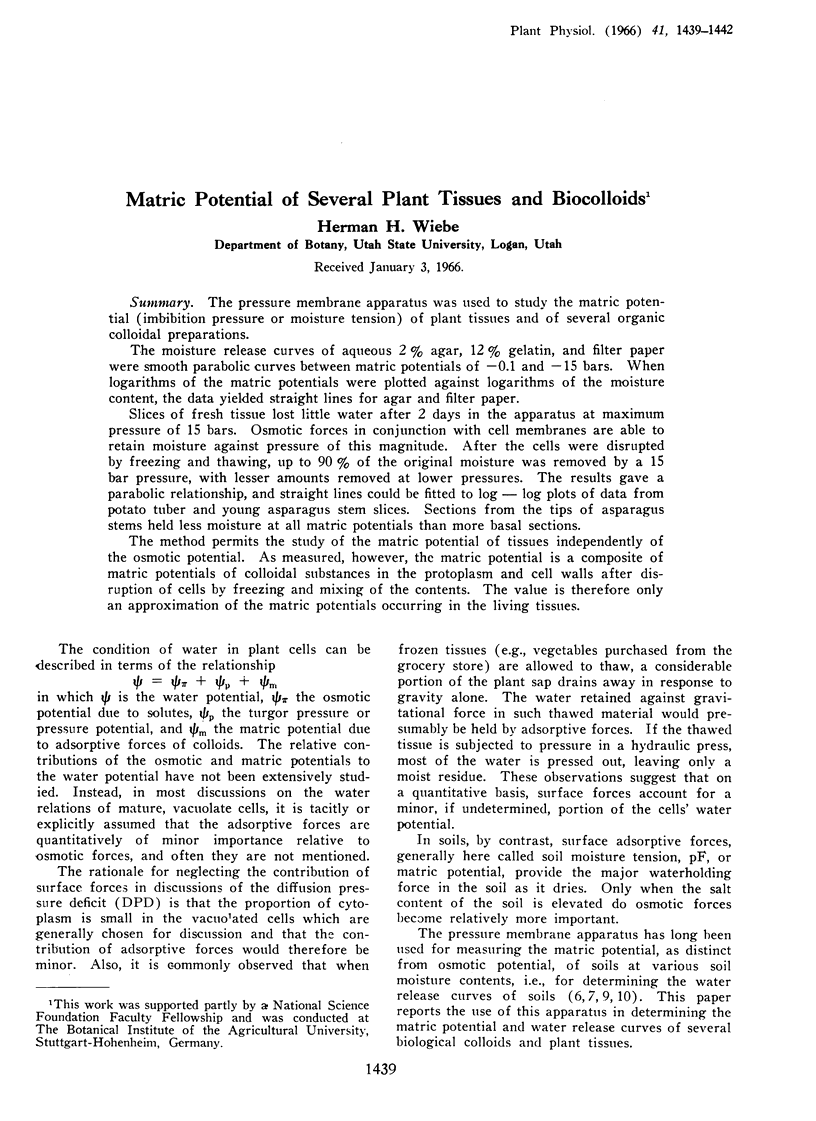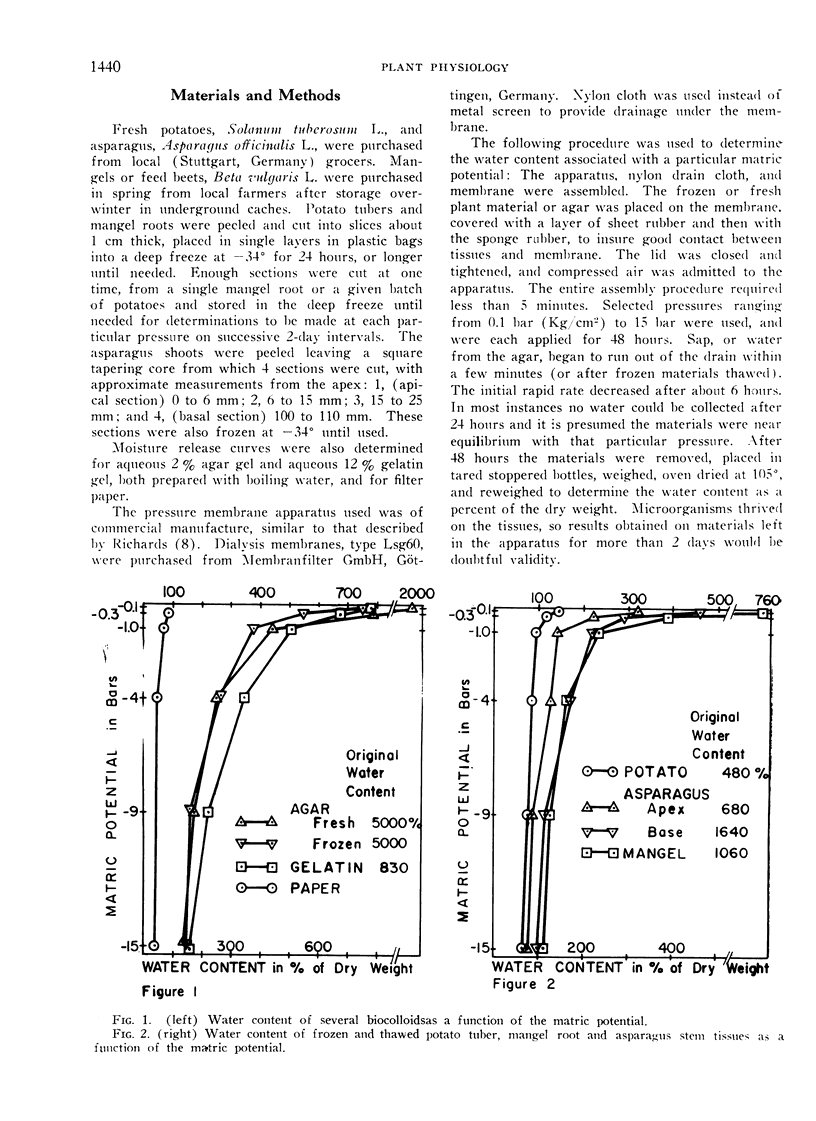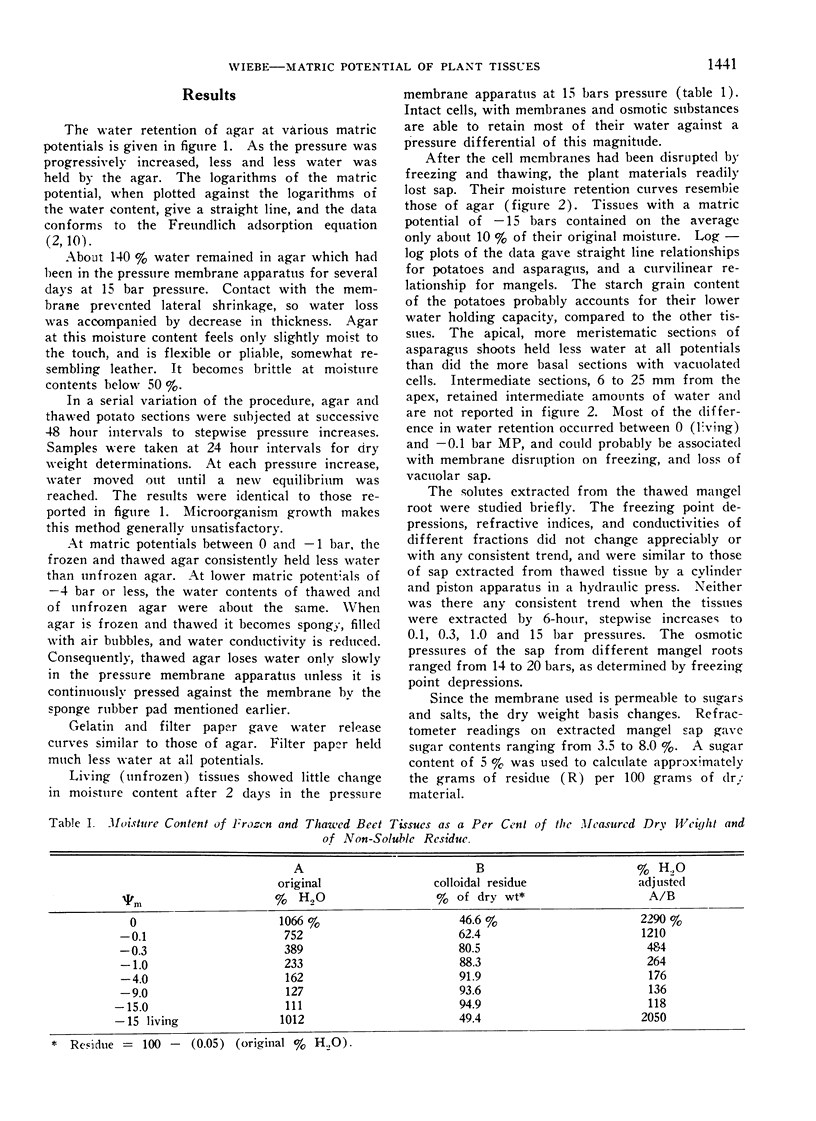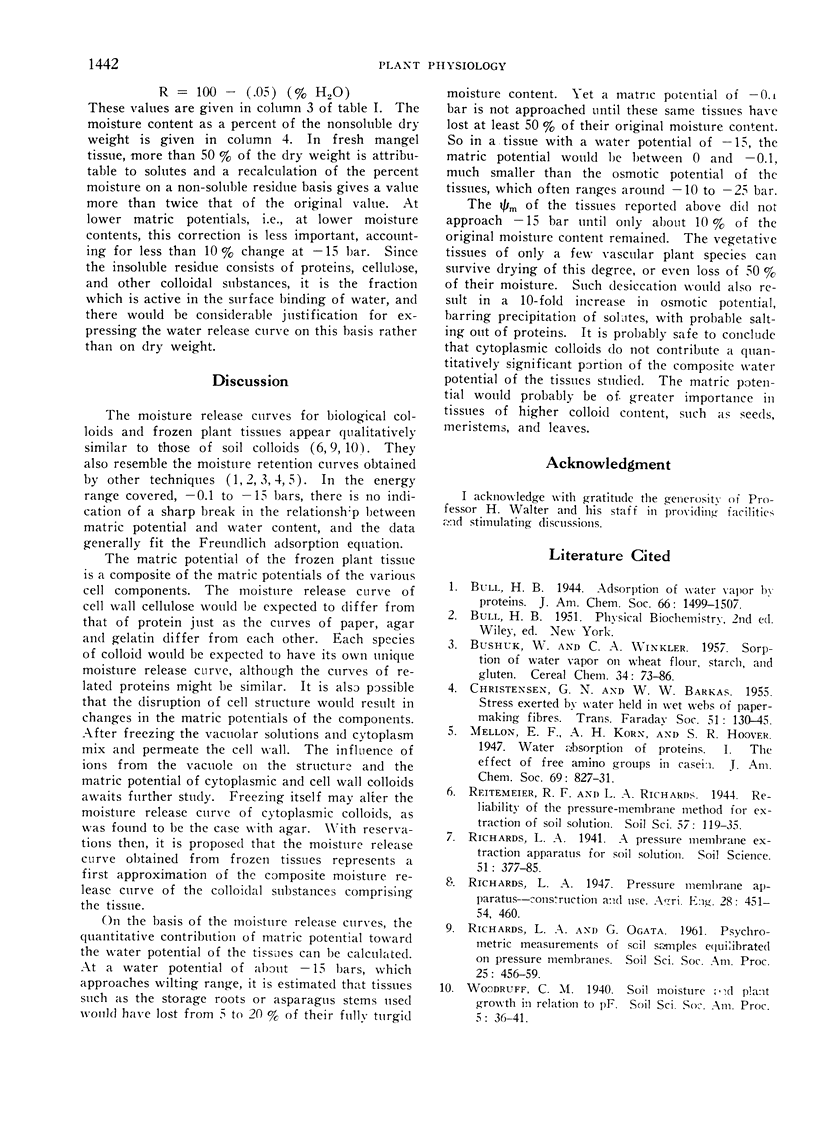Abstract
The pressure membrane apparatus was used to study the matric potential (imbibition pressure or moisture tension) of plant tissues and of several organic colloidal preparations.
The moisture release curves of aqueous 2% agar, 12% gelatin, and filter paper were smooth parabolic curves between matric potentials of −0.1 and −15 bars. When logarithms of the matric potentials were plotted against logarithms of the moisture content, the data yielded straight lines for agar and filter paper.
Slices of fresh tissue lost little water after 2 days in the apparatus at maximum pressure of 15 bars. Osmotic forces in conjunction with cell membranes are able to retain moisture against pressure of this magnitude. After the cells were disrupted by freezing and thawing, up to 90% of the original moisture was removed by a 15 bar pressure, with lesser amounts removed at lower pressures. The results gave a parabolic relationship, and straight lines could be fitted to log—log plots of data from potato tuber and young asparagus stem slices. Sections from the tips of asparagus stems held less moisture at all matric potentials than more basal sections.
The method permits the study of the matric potential of tissues independently of the osmotic potential. As measured, however, the matric potential is a composite of matric potentials of colloidal substances in the protoplasm and cell walls after disruption of cells by freezing and mixing of the contents. The value is therefore only an approximation of the matric potentials occurring in the living tissues.
Full text
PDF





